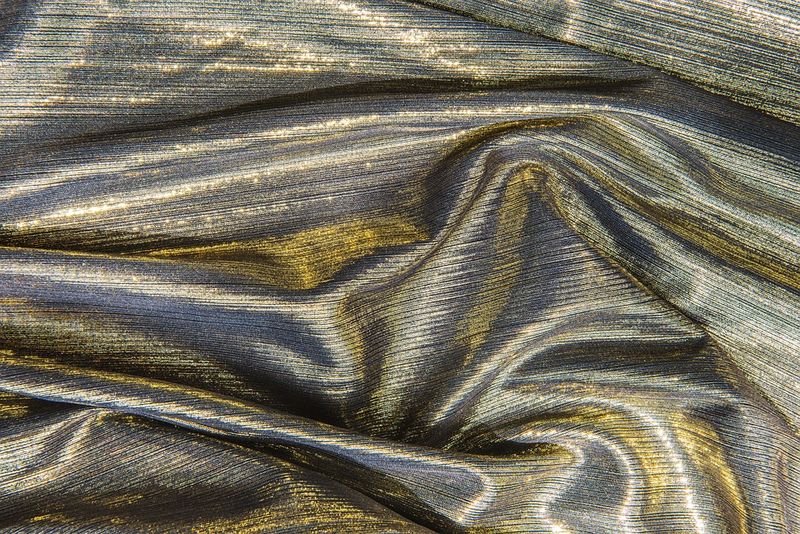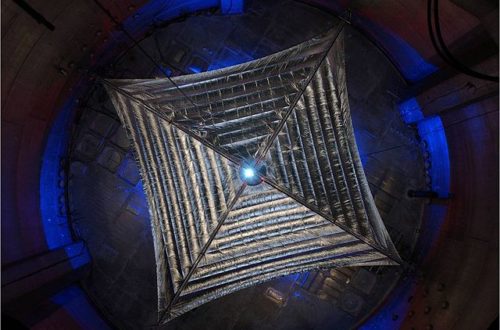Exciting Future Uses of Textiles in Space

When we think about space-age technology and exploring the Cosmos, we usually think of metals, foils and ceramics. But what about textiles?
As many NASA engineers can tell you, textiles have always been an unsung hero in the world of material science. But if the future of space exploration pans out the way engineers expect, humanity’s status as a spacefaring species will see the inclusion of — and even come to depend on — advanced new types of fabrics, textiles and membranes. Here’s a preview.
Rovers, Capsules and Other Vehicles
When it comes to building something, you can generally choose materials that provide low weight or durability — usually not both. In the aerospace industries, shaving off precious ounces and pounds is sometimes necessary, even if it comes at the expense of ruggedness or resistance to the elements.
Fabrics and textiles have stepped into this impossible dilemma and thrown open the doors of innovation when it comes to building manned capsules, unmanned rovers, launch and re-entry vehicles any other machines that must be subjected to some of the most impossibly harsh environments you’ll find anywhere.
Woven metal fabrics are already showing potential, according to NASA, in providing durable shells that are incredibly flexible — to the point where they can deform themselves mid-task to serve other functions. NASA speculates that such fabrics will soon be used in the construction of space antennae and astronaut spacesuits to offer both the rigidity and dexterity — imagine astronauts’ gloves here — required to perform finer tasks aboard spacecraft.
Flexible metal textiles could even shield spacecraft against meteorites and other impacts. In rovers and other planetside craft, the ability of metal fabrics to deform and reform on demand could add additional sure-footedness on difficult alien terrain.
We’ll talk a bit more about the materials involved in fabricating textiles like these. For now, this is an abridged list of the qualities that fabrics and textiles can bring to spacecraft and ground vehicles:
- Dampen vibrations
- Reduce weight without sacrificing strength or rigidity
- “Smart” textiles can transfer heat, light and even data
- Carbon fiber roving, a kind of high-twist “yarn,” even served as a heat-resistant build material in Ariane 6, the largest solid rocket engine of its kind
Clothing and Space Suits
Many of the desirable qualities that textiles bring to the world of vehicle design can be applied to space suits and the layers of clothing beneath, which are — one can imagine — every bit as important. In prolonged exposure to difficult conditions of any kind, not having breathable, comfortable and rip-resistant clothing can mean distraction from the mission — or worse.
Several promising new fabric types feature potential aerospace-ready capabilities, including:
- Dirt- and dust-repellency
- Antimicrobial
- Nonflammable
- Lowest possible toxicity
- Must help regulate sweat production and prevent overheating
Whether for use within spacecraft or worn during extra-vehicular activities, clothing for outer space has higher than average standards. NASA recognizes flammability alone as a key reason to eliminate cotton, polyesters, wools and many familiar synthetic textiles in favor of fabrics woven with Teflon, fiberglass and other non-flammable but incredibly versatile materials.
Even more radical ideas have been proposed, too. Statex Productions recently showed off its Shieldex-branded textile-ready sensors that can be incorporated into gloves to measure pressure and force. Statex is also pursuing biomedical applications by researching materials that can speed up injury recovery by directing the healing process via interwoven sensors.
Living Spaces, Habitats and Other Facilities
A great deal of excitement surrounds the landing of additional rovers on Mars and the eventual promise of seeing human footprints there, as well. But in the meantime, the human body must withstand a dizzying variety of environmental and atmospheric conditions — with technology’s help. Long before a Mars colony will break ground, we’ll require temporary living environments that have to do quite a lot with very little.
The woven metals, carbon fibers and fiberglass we’ve been discussing here offer the potential for interior living spaces, too. Storms and high winds are a possibility on the surface of any world, and the fabrics of walls and adjoining corridors must offer modular flexibility, as well as the ability to shrug off high winds and potential puncture damage.
Expect geotextiles — fabrics which have long been a staple in terrestrial building projects to provide drainage, structure and protection — to get the space-age treatment, as well. Geotextiles can now be fabricated from more than 400 materials, some of which have demonstrated potential in habitat and greenhouse construction thanks to permeable membrane structures that are strong but can still filter water, air and light effectively for humans and plants to use.
Just getting to, much less conquering, the Cosmos will require the human race to deploy its creativity and its knowledge of science in a more organized way than ever before. The confluence of technologies and bold ideas on display in textiles today — one of the most ancient of ancient industries — is a sign that this bold future is finally within our reach.
Would you like to receive similar articles by email?






2 Comments
geotextile fabric
Geotextile fabric stabilizes the ground by spreading loads over a larger area.
Paul Tomaszewski
Yes, exactly! And now geotextile fabrics are going to be used in space as well.